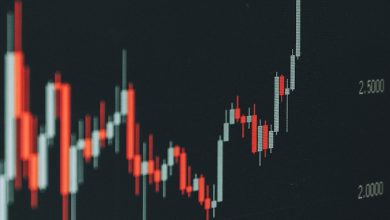What Caused the Latest Crypto Market Crash?

- Overview of the recent crypto market crash
- Factors contributing to the downward trend in cryptocurrency prices
- Impact of regulatory crackdowns on the crypto market
- Role of market manipulation in the latest crash
- Comparison to previous market crashes in the cryptocurrency world
- Strategies for investors to navigate through volatile crypto markets
Overview of the recent crypto market crash
The recent crypto market crash took many investors by surprise, causing panic and uncertainty in the market. This sudden downturn in prices was primarily triggered by a combination of factors that led to a domino effect across various cryptocurrencies. One of the main reasons behind this crash was the regulatory crackdown by governments around the world, including China’s ban on cryptocurrency mining and trading. This created fear among investors and resulted in a massive sell-off of digital assets. Additionally, concerns over environmental impact and energy consumption of cryptocurrencies like Bitcoin also played a role in the market crash. As a result, prices plummeted across the board, wiping out billions of dollars in market value. It remains to be seen how the market will recover from this setback and what measures will be taken to stabilize prices in the future.
Factors contributing to the downward trend in cryptocurrency prices
Several factors have contributed to the recent downward trend in cryptocurrency prices. One of the main reasons is the increased regulatory scrutiny that cryptocurrencies are facing. Governments around the world are cracking down on digital assets, which has led to uncertainty and fear among investors.
Another factor is the overall market sentiment. Negative news, such as security breaches and scams, have eroded trust in cryptocurrencies. This has caused many investors to sell off their holdings, further driving down prices.
Additionally, the rise of stablecoins and central bank digital currencies (CBDCs) has diverted attention away from traditional cryptocurrencies. These alternatives are seen as more stable and less volatile, making them more attractive to investors.
Furthermore, the energy consumption associated with mining cryptocurrencies has come under scrutiny. With growing concerns about climate change, many investors are turning away from cryptocurrencies that require large amounts of energy to operate.
Overall, a combination of regulatory pressure, market sentiment, competition from stablecoins and CBDCs, and environmental concerns has contributed to the recent decline in cryptocurrency prices.
Impact of regulatory crackdowns on the crypto market
The recent crash in the crypto market has been largely attributed to the impact of regulatory crackdowns on the industry. Government bodies around the world have been tightening their regulations on cryptocurrencies, causing uncertainty and volatility in the market. This has led to a decrease in investor confidence and a subsequent sell-off of digital assets.
Regulatory crackdowns on crypto exchanges, initial coin offerings (ICOs), and digital asset trading have all played a role in the market crash. Authorities have been cracking down on exchanges that do not comply with anti-money laundering (AML) and know your customer (KYC) regulations, leading to closures and increased scrutiny. Additionally, ICOs have come under fire for lack of transparency and potential fraud, leading to regulatory intervention.
The uncertainty surrounding the regulatory environment for cryptocurrencies has caused many investors to panic and sell off their holdings. This mass exodus has led to a sharp decline in prices across the market, as supply has outstripped demand. Until there is more clarity on how governments will regulate cryptocurrencies, it is likely that the market will continue to experience volatility and downturns.
Overall, the impact of regulatory crackdowns on the crypto market cannot be understated. As governments around the world move to tighten their grip on the industry, investors are left with little choice but to weather the storm. Only time will tell how the market will react to these regulatory challenges in the long term.
Role of market manipulation in the latest crash
Market manipulation played a significant role in the recent crash of the cryptocurrency market. There have been reports of large investors using tactics such as spoofing and wash trading to artificially inflate or deflate prices for their own gain. These manipulative practices create a false sense of demand or supply, leading to drastic price movements that can trigger panic selling among retail investors.
Spoofing involves placing fake buy or sell orders to deceive other traders into making decisions based on false information. This can create artificial volatility in the market, causing prices to swing wildly in either direction. Wash trading, on the other hand, involves buying and selling assets to oneself to create the illusion of high trading volume. This can trick other investors into thinking there is more market activity than there actually is.
In addition to these tactics, pump and dump schemes have also been prevalent in the crypto market. In these schemes, a group of investors coordinate to inflate the price of a particular asset through false hype and misleading information. Once the price reaches a certain level, the group sells off their holdings at a profit, leaving unsuspecting investors with significant losses.
Overall, market manipulation undermines the integrity of the cryptocurrency market and erodes trust among investors. Regulators have been cracking down on these practices, but they continue to be a persistent threat to the stability of the market. It is essential for investors to remain vigilant and conduct thorough research before making any investment decisions to avoid falling victim to these manipulative schemes.
Comparison to previous market crashes in the cryptocurrency world
During the latest crypto market crash, many investors couldn’t help but draw comparisons to previous downturns in the cryptocurrency world. One of the most notable crashes occurred in 2018 when Bitcoin experienced a significant drop in value. This crash was attributed to regulatory concerns, security breaches, and market manipulation. Another market crash that left a lasting impact was the Mt. Gox incident in 2014, where a major exchange platform filed for bankruptcy after losing hundreds of millions of dollars worth of Bitcoin. These past crashes serve as a reminder of the volatility and risks associated with investing in cryptocurrencies. While each crash may have unique causes, they all highlight the importance of conducting thorough research and exercising caution when entering the crypto market.
Strategies for investors to navigate through volatile crypto markets
Investors looking to navigate through volatile crypto markets can employ various strategies to protect their investments and capitalize on opportunities. One approach is to diversify their portfolio by investing in a range of cryptocurrencies rather than putting all their eggs in one basket. This can help spread risk and minimize the impact of price fluctuations in any single asset.
Another strategy is to stay informed about market trends and developments by following reputable sources of information such as news websites, forums, and social media channels dedicated to crypto. By staying abreast of the latest news and analysis, investors can make more informed decisions about when to buy, sell, or hold their assets.
Additionally, setting clear investment goals and risk management strategies can help investors stay focused and disciplined during periods of market volatility. Establishing stop-loss orders, for example, can limit potential losses by automatically selling assets if they reach a certain price point.
Moreover, it’s essential for investors to remain patient and avoid making impulsive decisions based on short-term price movements. Volatility is a natural part of the crypto market, and it’s crucial to take a long-term view and not be swayed by emotions or market noise.
Lastly, seeking guidance from financial advisors or experienced investors can provide valuable insights and perspectives on navigating through turbulent market conditions. By learning from the experiences of others and staying disciplined in their approach, investors can better position themselves to weather market crashes and emerge stronger on the other side.



